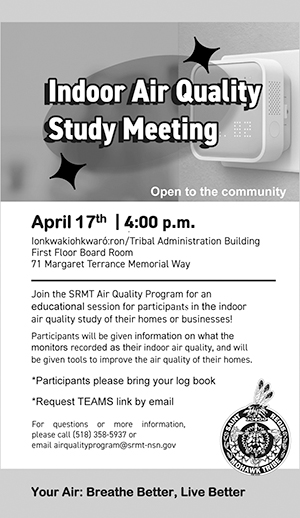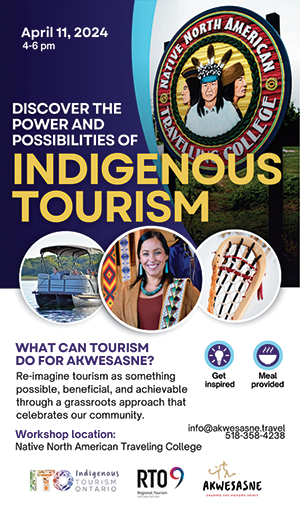The seeds of racism and hate hurt us all
‘The heinous and deadly attack at a Buffalo supermarket is the latest, unspeakable example of what can happen when racism is normalized and allowed to grow, fester, and be unleashed’
By Leslie Logan, Seneca.
Two weekends ago in Buffalo’s Black-populated Masten district, a heavily armed, 18-year-old White male, dressed in fatigues, tactical gear, and Kevlar, shot 50 rounds of gunfire, killing 10 and injuring three; 11 of the victims were Black. The young man had driven more than three hours from Conklin, New York, and specifically targeted the supermarket that serves the inner-city Black community.
Buffalo is a little more than 40 minutes north of my home on the Cattaraugus territory, one of the two residential land bases of the Seneca Nation. It is especially alarming when a hate crime hits so close to home.
The refrain heard again and again in Western New York has been “Hate has no home here.” But hate came; hate drove three hours to execute Black people. Hate was downloaded from the internet. Hate was inspired by the South Carolina church massacre of Black parishioners, and the shooting of Jewish worshippers in Pittsburgh. Hate was prompted by the shooter of shoppers in El Paso. Hate was plucked from halfway around the world in the Christchurch, New Zealand attack. Hate was grafted from subway and train shootings. Hate was repurposed and given new life, resulting in more death, in Buffalo.
The teenaged shooter’s 180-page screed revealed that he plotted his murderous escapade with deliberation and wrote about his plans in methodical detail.
Investigators have found that the 18-year-old, who openly, proudly referred to himself as an anti-semite, White supremacist, subscribed to a right-wing extremist ideology, known as “replacement theory.” The theory, promoted by the likes of Tucker Carlson on Fox, posits that White people are being elbowed out by growing minority populations, especially migrants crossing the border and Blacks. It is a theory that stokes fear, with a response call to eliminate Blacks, Jews, and immigrants in order to maintain white supremacy.
Replacement theory ignores the fundamental facts that Native people, the original inhabitants of North America, were the first peoples impinged upon by a flood of invading immigrants who sought to erase, displace, dispossess, and replace them.
The White shooter, who wrote extensively about his embrace of the theory, completely failed to recognize the irony that every cross-section of White people in America today, whatever their ancestral beginnings, are hybrid guilty parties. The vast majority of white Americans are descendants of the first invaders, who aimed to replace the First Peoples.
But extremists aren’t big on facts and logic or bothered by conspiracy theories rife with flaws and contradictions; they seem more driven by fear, emotions, and abject hate.
As a society, we must identify when, where, and how the seed of hate is planted, germinated, and allowed to flourish. The Buffalo shooter was a young man, just out of high school. Who or what is to blame and where did the fiery hate of an 18-year-old emanate from?
Blame is being cast every which way. Commentators say it is the fault of the parents. People say it is the failure of the education system. Others point to narrow-minded xenophobic, rural, small-town America that lacks diversity and exposure to other racial, ethnic people and cultures. Some say it is the influence of extremist views in the media, music, movies, and books. Some are even blaming the pandemic for prompting the shooter, out of boredom, to become entranced by the “dark web” – that the shooter was radicalized on the internet.
Most would agree it is not any one thing, but a confluence of factors. In the wake of the worldwide George Floyd murder protests, many American leaders, including the president at the time, refuted the pronouncements that the country and its law enforcement agencies are beset with institutional, systemic racism.
Despite what institutions, the media, school boards, or elected leaders believe or deny, racism is the invisible enemy, the rub of evil. It is not just unhealthy for society, as evidenced in Buffalo, it is catastrophic to communities of color.
The heinous and deadly attack at a Buffalo supermarket is the latest, unspeakable example of what can happen when racism is normalized and allowed to grow, fester, and be unleashed.
When Buffalo’s Black community gets attacked, who’s next? All people of color are at risk when a madman with a gun starts shooting at people who are different from him.
All Brown, Black and Indigenous communities are vulnerable to extreme racist acts when racist, White supremacist views are allowed to run wild, unchecked and without condemnation or consequences.
There is a cacophony of conversations today calling for healing, interracial dialogue, the need to reexamine Buffalo’s highly segregated neighborhoods, the need to come together to eradicate evil, to revisit gun control policy and legislation, and the need for change – with a capital C, a proposition that is about as attainable as converting chia seeds to gold bricks by microwave.
Not to diminish efforts to engage diverse communities, hold critical conversations, and address important issues; these are all badly needed. The real work isn’t incumbent on the Black community; the real work will be whether white America is ready and willing to grapple with the issues in meaningful ways. Meaningful would include the ability to admit that the country as a whole, has a problem – and to call it for what it is: racism.
They say admitting you have a problem is the first step. Then you have to put an end to the behavior; the third step is addressing the problem of racism and making things right.
Whether America is ready to respond in meaningful ways by making things right with, let’s say, reparations – a word and concept largely unutterable and avoided in American institutions – is a whole other battle.
Ten years down the line, after the hashtags have been forgotten, the hand wringing has subsided, and the healing has borne out fading, but inextinguishable scars, one wonders what the retrospectives will look like.
Will there be progress, reforms, change? Will Western New Yorkers have utilized the crisis as an opportunity to bring about any real change? Time will tell.
Buffalo’s east side wasn’t the site of the first racially motivated, White-supremacist, extremist-inspired, mass-shooting hate crime, and it surely won’t be the last. Mass shootings used to be labeled “extreme and rare.” They remain extreme, but in the United States, with nearly 200 mass shootings in 2022, only five months into the year, the rarity of these horrific events is no more.
On the day after the shooting, Mothers of the Seneca Nation took part in the Women’s Solidarity Day March at Broderick Park on Buffalo’s west side. I represented the Mothers and spoke to the need for better understanding and improved relations with local surrounding communities, the media, and New York State. I called upon the media to dispel inaccurate portrayals and misrepresentations of Native people, and called for more education on Seneca history, culture and greater awareness of important issues affecting Indigenous people – all in an effort to fight racism.
In a country that was stolen from Native people, under the guise of Manifest Destiny and the Doctrine of Discovery, and built on the backs of Black slaves, neither of which right-wing legislators and certain people in Congress, including former President Trump are willing to acknowledge – and when basic facts and history are ignored and dispensed with – America isn’t exactly receptive to admitting wrongs and owning racism.
New York Gov. Kathy Hochul and President Joe Biden came to Buffalo today to console the community, pray for healing, and offer hope. Gov. Hochul said, “We must do everything we can to eradicate evil.”
President Biden said, “We must reject the poison of White supremacy.”
All good words, but the U.S. legislative bodies aren’t exactly in a position to legislate hate and evil; they’re too busy turning the clocks back trying to deny women’s reproductive rights. No presidential executive order, however well intentioned, can wipe out racism or keep Brown, Black, and Native people safe.
Without acknowledging the hostilities and the abuses that justified both genocide and domination over Black and Indigenous people, racism will always have a foothold here. Extreme views are no longer hard to find in the dark corners of the web; they are plugged by members of Congress in broad daylight. With the unadulterated promotion of white nationalist theories just about everywhere, evil and racism will continue to prey upon and infiltrate the penetrable hearts and malleable minds of young and old in small town America like Conklin, New York.
Mothers of the Seneca Nation are focused on protecting our children, families, and communities. Like most mothers everywhere, we are committed to forging a world with better relations to create a healthier environment in which all children can learn about other cultures, adopt tolerance, accept differences, support one another, and thrive alongside each other.
In the wake of the tragedy, the Mothers issued a statement in solidarity with and in support of Buffalo’s Black community. The Mothers beseeched that we must all come together for the Seventh Generation, for a better future for our children, and take a universal stand against the racism that antagonizes others and fuels hate.
Words Matter
Just two days prior to the mass shooting the Mothers of the Nation met with the publisher of the Buffalo News and its editorial board. The Mothers of the Nation met with the Buffalo News, the region’s largest newspaper, because no less than six editorial board opinion pieces – since January – castigated, antagonized, and belittled the Seneca Nation over a long-standing gaming dispute.
Three weeks ago, I wrote a lengthy, detailed account of the litany of attacks and instances of loaded language the Buffalo News leveled at the Seneca, without restraint, titled “Senecas Under Siege.”
In the editorial board meeting, the editors explained that it was their job to “shape opinions of its readers with accurate information.”
The Buffalo News has repeatedly cast the Seneca in a bad light; they have called the Seneca “greedy,” “bad faith actors,” and “weasels,” among other things. They have left out salient facts in their reporting, and they have edited out key arguments of the expressed views of Mothers’ in their letters to the editor. The Buffalo News has failed to provide an accurate, comprehensive understanding of contentious issues, and they have failed to report on important issues such as missing and murdered Indigenous women and girls, in a market with 12,000 Native people.
In Western New York, the Buffalo News does shape people’s perspectives; their slanted approach, sharply negative editorial attacks – and the Mothers of the Seneca Nation contend – their racist antagonisms, skew and sour local views against the Seneca. Words matter, especially if those words and views are launched from a trusted local news source and leveled at a minority Indigenous community.
Racism is disguised and dressed up in many forms, made palatable and opaque, or bitter and overt. It is alive and well on the not-so-dark internet, easily accessible, and easy to ignite.
Racism lives in the twisted minds of white supremacists’ intent on physically harming those who don’t look like them, but it also dribbles out in written attacks in newspaper editorial pages that spew bias and antagonisms. Racism is given voice in verbal attacks on the sidelines of our children’s lacrosse games, and in subtle, passive-aggressive ways, when entities, such as New York State, ignore the cultural and economic contributions of Indigenous people upon whose lands they occupy.
The first step is admitting you have a problem, and perhaps agreeing on what the problem is.
Each and every one of us must be vigilant and take an individual stand against racism. We must stand together and hold all those accountable – whether it’s those in positions of power, control of the news, or armed evil shooters on a diabolical mission – for the destructive permutations of racism.
Collectively we must call racism out when it is spotted; we must expose it, reject it, condemn it, and demand redress. If there are no consequences to those who give life to racism, then we are all at risk of dying at the hands of it.












Reader Comments(0)